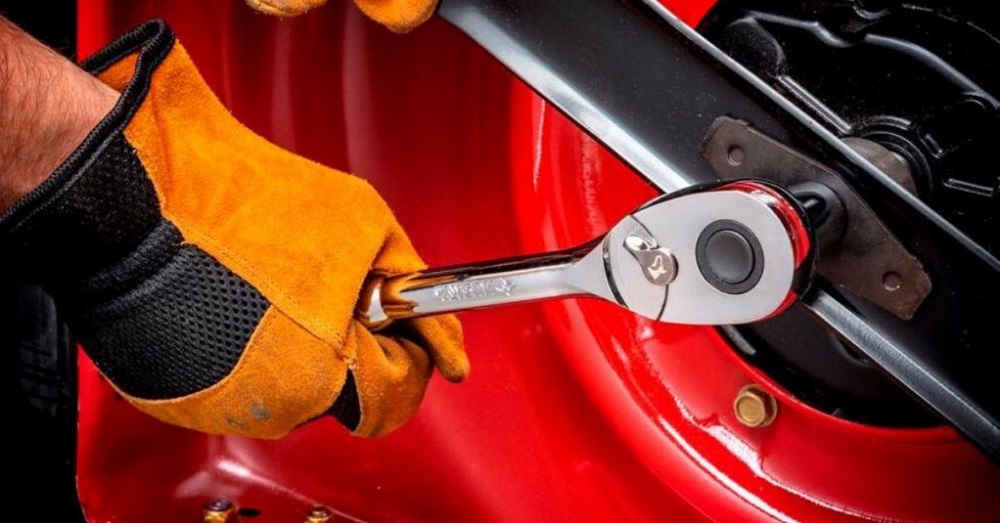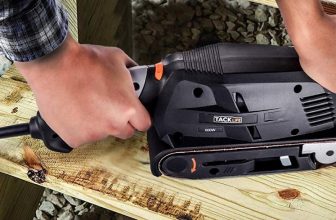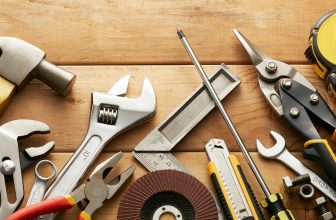Although sockets and ratchets aren’t utilized as much as other tools by the average person, they’re tools that everyone should familiarize themselves with. These tools are extremely handy to own and use and they give the consumer the ability to repair everything from their vehicle to their outdoor playset and beyond. That’s why we’ve decided to give our readers some hints on how to buy the best sockets and ratchets. With that said, let’s get started by talking about how sockets and ratchets work and then we’ll move on to supplying some helpful tips on buying them.
How Do Sockets & Ratchets Operate?
Ratchets are the handle of the socket wrench, and sockets are snapped into the end of it via a square connector. Once the socket has been placed on the ratchet, the other end of the socket is then placed over the appropriate size fastener. Most ratchets are set up so that it can be turned one direction to tighten or loosen a fastener, but can move freely the other direction so that the tool can be properly used. Most of these ratchets will also have a switch on them that changes the direction that loosens or fastens them, and which direction moves them freely.
Why Choose A Socket Over A Conventional Wrench?
First of all, let us state that we have nothing against wrenches. We still feel that they’re great tools and can handle a wide variety of different jobs. However, some jobs are better done by a ratchet and socket set than with a conventional wrench. Because the socket completely envelopes the fastener, they’re less likely to slip off than a wrench during use. And for some jobs, such as changing spark plugs, a ratchet and socket set is the only tool that can be used. That’s why everyone should have not only a selection of wrenches in their toolbox but also a ratchet and socket set.
A Guide To Buying Ratchets & Sockets
Now that we’ve dispensed with how socket sets work and why they are preferable for some jobs over an ordinary wrench, now it’s time to dig into the meat and potatoes of this article. In this section, we’re going to cover some of the things that you’re going to want to consider when buying a new ratchet and socket set. Sound good? Let us begin then.
What To Consider When Buying A Ratchet
Okay, the following bullet points are some of the things that you’ll want to consider when buying a ratchet or ratchet set. It should be noted that most socket sets have multiple ratchets in them, so the following tips can be used to determine if the set has the ratchets that you need.
Check The Ratchets Drive Size
Ratchets come in a variety of different sizes, from 1/4-inch to 3/8-inch. These different drive sizes allow the ratchet to be used with different size sockets.
Consider The Ratchets Tooth Count
Since most ratchets operate with a geared drive, it’s helpful to consider the tooth count of the ratchet. The higher the tooth count of the ratchet drive, the smaller the swinging motion needed to operate it. That makes ratchets with high-tooth counts easier to use in tight quarters.

Not All Ratchets Have Geared Drives
Of course, not all ratchets have geared drives. Some of them are manufactured to be gear-less. How do these drives work? They work with the use of a roller bearing. A roller bearing allows the ratchet to be used with smaller turns, so it’s also a good choice for tight quarters.
Consider A Jointed Ratchet Head
You might also want to consider whether the ratchet head is flexible or jointed. These ratchets allow you to change the angle of the handle for dealing with fasteners that are placed at an unusual angle.
Consider The Ratchet’s Construction
The material used to make the ratchet is of prime importance. High-quality ratchets are designed with alloy steel that is designed to be durable and to resist corrosion, so you should try to purchase ratchets and sockets made out of alloy steel whenever possible.
What To Consider When Buying Sockets
Now that we’ve covered ratchets, it’s now time for us to turn our attention to buying the sockets that you might need to get a job done. Below are some of the things to consider when buying sockets for your new ratchet.
Consider The Sockets Size
The first thing to consider when buying sockets is the size of the socket, as well as whether its an SAE or metric size. It’s important to consider the size of the socket to be sure that it fits the ratchet you’re using, as well as the size of the fastener being tightened or loosened. Do you need the socket to fit a ¼, ½ or ¾ inch ratchet and what size is the fastener? Those are the two questions you need to ask to ensure you purchase the proper sockets.
Consider The Socket’s Shape
The next thing to think about is the shape of the socket. Sockets are designed to fit a variety of fasteners, and there are 6-point, 12-point, and universal sockets to consider. There are also some sockets that are used for star-shaped or square sockets.
Consider The Socket’s Profile
It’s also important to consider the profile size of the socket, especially if it’s going to be used in a tight area such as an engine compartment. Some applications require the use of a deep socket—which is a socket that can reach a fastener that’s recessed or used for nuts that are equipped on longer threaded bolts. Deep sockets are often used for removing spark plugs on some engines where the spark plugs are recessed into the spark plug well.
Do You Need A Pass-Through Socket?
Some applications require a pass-through socket to be used. A pass-through socket allows the bolt to extend through the bolt to handle nuts equipped on longer bolts. These sockets are only designed to work with pass-through ratchets and have a low-profile design to them.





